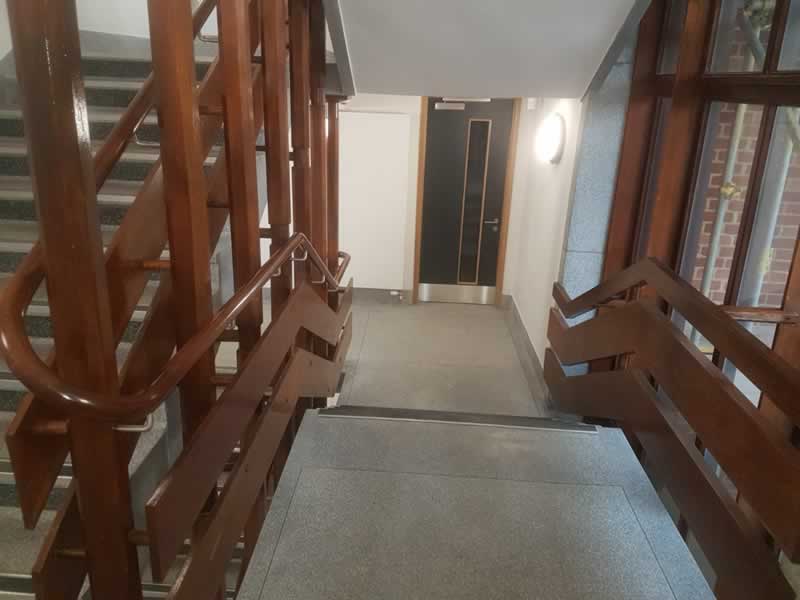Are Smoke Seals Required? Yes…
Smoke seals are recommended on doors approaching or protecting escape shafts such as stairs and corridors and where a door separates a private area from a common space such as a flat front door.
ALL fire doors MUST be fitted with the appropriate seals. They are designed to expand under heat, and fill the gaps between the door leaf and frame, thereby preventing the passage of smoke and fire to other parts or compartments of the building.
Where smoke seals are required, the threshold gap (at the bottom of the door) must be set at no more than 3 mm.
Intumescent fire door strips swell if there is a fire and stop the spread of fire through the gaps at the top and sides of fire doors.
The materials contained in the seals, (such as sodium silicate or graphite), differ between seal manufacturers and expand at different rates. It’s important to use the same type of seals around the door when installing or replacing seals.
What about other types of seals, such as Smoke Seals?
You can also obtain combined Intumescent and Smoke Seals. These are designed to provide additional protection to prevent the passage of cold smoke. In some circumstances, smoke seals are a Building Regulation requirement.
Acoustic seals may also be required in certain situations such as in flats, apartments, doctor’s surgeries and schools. These act to provide an additional role to reduce the sound which can travel between the door and frame, or door and floor.
Uninterrupted intumescent strips should be fitted into the frame or lining, where possible. If this cannot be achieved, the intumescent seals may be fitted into the door edge. The recommended seal size for most modern 30 minute doors, other than door sets, is 15mm X 4mm. The recommended seal size for most modern 60-minute fire doors is 20mm X 4mm, or 2 No. 10mmX4mm.
Intumescent seals MUST be used as recommended by the door leaf manufacturer.

